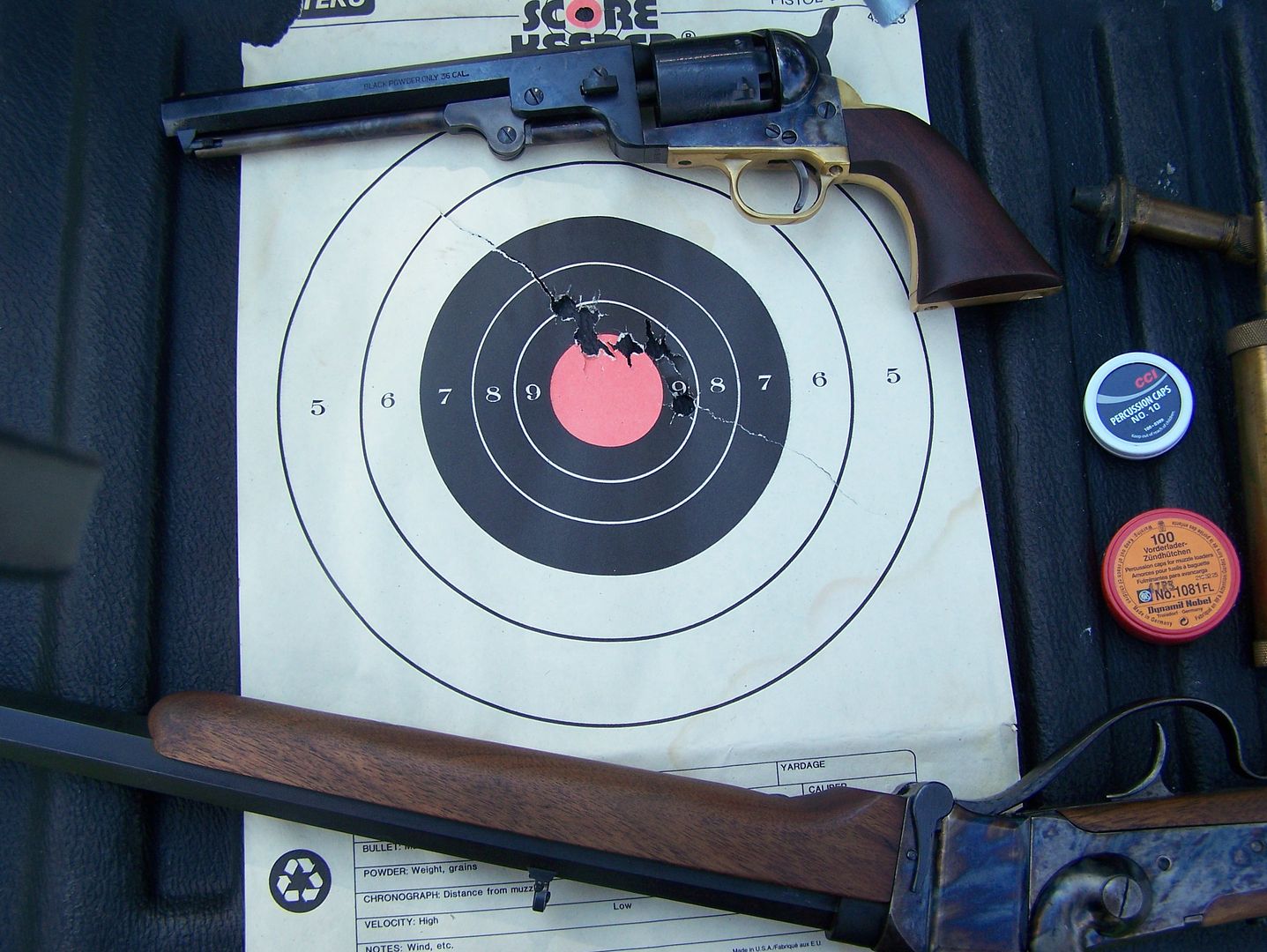Shot my two steel framed .44cal 1851s a couple days ago, and the new .36 cal 1851 Sheriff's Model.
The two .44 shot well, though I do get a few primers fired without the powder firing. A second cap fired okay. One will use #10 caps okay, the other won't and wants #11s. Both guns are identical except one has brass trigger guard/grip frame, the other is nickeled. Both shoot to same POI, some 6" high at 15 yards. Grouping is fair, once I got used to them.
The .36 has an issue. It too will take #10 caps, and I used Pietta's suggested 13 grains of powder. I am using Triple Seven so I actually expected a bit more 'oomph'.....
It was anemically underpowered, and had a noticeable delay between the cap popping and the powder igniting. Sounded like a flintlock! No recoil and it felt very light. I don't want to overload, as this nickeled frame is likely brass(?).
Could I not be seating the ball all the way down? Should I use the longer wads between powder and ball? The ball was seated pretty far down.
Is the 13 grains too light a load for a .36?
I considered going to 15 grains, but figured I'd check here first.
Been shooting .44s for decades, but this is my first .36 caliber revolver.
The two .44 shot well, though I do get a few primers fired without the powder firing. A second cap fired okay. One will use #10 caps okay, the other won't and wants #11s. Both guns are identical except one has brass trigger guard/grip frame, the other is nickeled. Both shoot to same POI, some 6" high at 15 yards. Grouping is fair, once I got used to them.
The .36 has an issue. It too will take #10 caps, and I used Pietta's suggested 13 grains of powder. I am using Triple Seven so I actually expected a bit more 'oomph'.....
It was anemically underpowered, and had a noticeable delay between the cap popping and the powder igniting. Sounded like a flintlock! No recoil and it felt very light. I don't want to overload, as this nickeled frame is likely brass(?).
Could I not be seating the ball all the way down? Should I use the longer wads between powder and ball? The ball was seated pretty far down.
Is the 13 grains too light a load for a .36?
I considered going to 15 grains, but figured I'd check here first.
Been shooting .44s for decades, but this is my first .36 caliber revolver.
Last edited:

